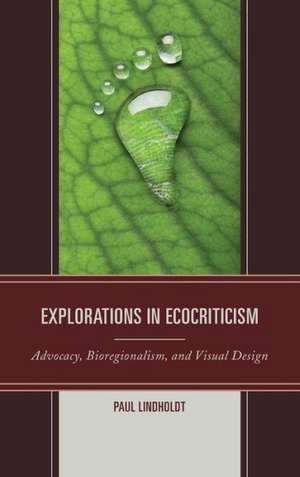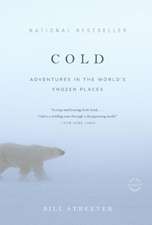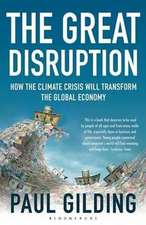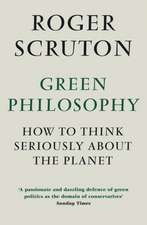Explorations in Ecocriticism: Ecocritical Theory and Practice
Autor Paul Lindholdten Limba Engleză Hardback – 8 apr 2015
Din seria Ecocritical Theory and Practice
-
 Preț: 247.51 lei
Preț: 247.51 lei -
 Preț: 204.73 lei
Preț: 204.73 lei - 23%
 Preț: 687.32 lei
Preț: 687.32 lei - 27%
 Preț: 714.87 lei
Preț: 714.87 lei -
 Preț: 394.77 lei
Preț: 394.77 lei - 23%
 Preț: 685.09 lei
Preț: 685.09 lei -
 Preț: 425.95 lei
Preț: 425.95 lei - 27%
 Preț: 717.26 lei
Preț: 717.26 lei - 27%
 Preț: 794.48 lei
Preț: 794.48 lei -
 Preț: 454.03 lei
Preț: 454.03 lei - 23%
 Preț: 686.27 lei
Preț: 686.27 lei - 27%
 Preț: 681.83 lei
Preț: 681.83 lei -
 Preț: 474.34 lei
Preț: 474.34 lei - 23%
 Preț: 647.46 lei
Preț: 647.46 lei - 27%
 Preț: 715.54 lei
Preț: 715.54 lei - 27%
 Preț: 788.38 lei
Preț: 788.38 lei - 23%
 Preț: 649.09 lei
Preț: 649.09 lei -
 Preț: 398.63 lei
Preț: 398.63 lei -
 Preț: 397.45 lei
Preț: 397.45 lei - 23%
 Preț: 648.64 lei
Preț: 648.64 lei - 27%
 Preț: 761.68 lei
Preț: 761.68 lei - 27%
 Preț: 756.23 lei
Preț: 756.23 lei - 27%
 Preț: 740.63 lei
Preț: 740.63 lei -
 Preț: 432.81 lei
Preț: 432.81 lei - 23%
 Preț: 657.77 lei
Preț: 657.77 lei -
 Preț: 449.53 lei
Preț: 449.53 lei - 23%
 Preț: 682.88 lei
Preț: 682.88 lei - 23%
 Preț: 605.56 lei
Preț: 605.56 lei - 23%
 Preț: 648.80 lei
Preț: 648.80 lei - 27%
 Preț: 683.94 lei
Preț: 683.94 lei - 23%
 Preț: 683.62 lei
Preț: 683.62 lei - 23%
 Preț: 649.68 lei
Preț: 649.68 lei -
 Preț: 399.79 lei
Preț: 399.79 lei -
 Preț: 455.30 lei
Preț: 455.30 lei -
 Preț: 427.91 lei
Preț: 427.91 lei - 27%
 Preț: 756.78 lei
Preț: 756.78 lei - 23%
 Preț: 683.76 lei
Preț: 683.76 lei - 23%
 Preț: 685.09 lei
Preț: 685.09 lei -
 Preț: 399.79 lei
Preț: 399.79 lei -
 Preț: 467.34 lei
Preț: 467.34 lei -
 Preț: 363.35 lei
Preț: 363.35 lei - 23%
 Preț: 679.19 lei
Preț: 679.19 lei -
 Preț: 487.41 lei
Preț: 487.41 lei - 27%
 Preț: 715.54 lei
Preț: 715.54 lei - 23%
 Preț: 699.93 lei
Preț: 699.93 lei - 27%
 Preț: 790.95 lei
Preț: 790.95 lei
Preț: 671.06 lei
Preț vechi: 919.25 lei
-27% Nou
Puncte Express: 1007
Preț estimativ în valută:
128.41€ • 134.41$ • 106.88£
128.41€ • 134.41$ • 106.88£
Carte tipărită la comandă
Livrare economică 31 martie-14 aprilie
Preluare comenzi: 021 569.72.76
Specificații
ISBN-13: 9780739194980
ISBN-10: 0739194984
Pagini: 246
Ilustrații: 11 black & white halftones
Dimensiuni: 177 x 231 x 23 mm
Greutate: 0.5 kg
Editura: Rowman & Littlefield
Seria Ecocritical Theory and Practice
ISBN-10: 0739194984
Pagini: 246
Ilustrații: 11 black & white halftones
Dimensiuni: 177 x 231 x 23 mm
Greutate: 0.5 kg
Editura: Rowman & Littlefield
Seria Ecocritical Theory and Practice
Notă biografică
Descriere
This book explores the range of ecocriticism. Purposefully it swerves into advocacy, anthropology, bioregionalism, environmental history, politics, rhetoric, visual arts, and other neglected areas that make for freer theorizing and more original critical designs.












